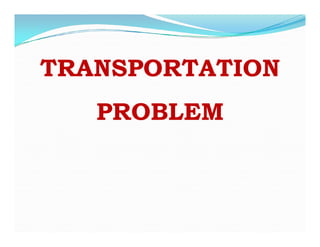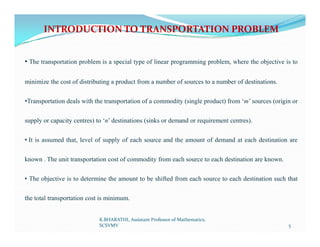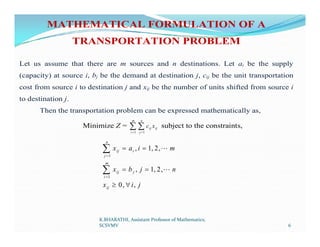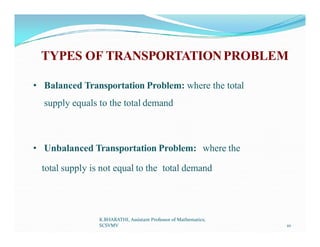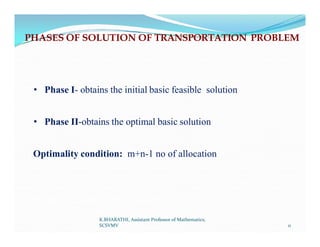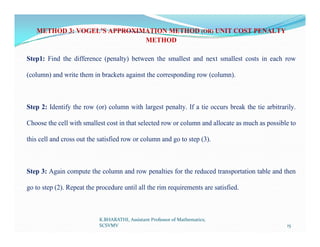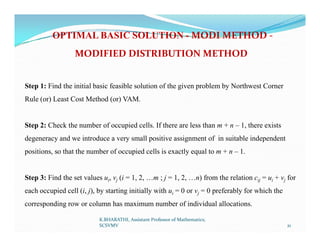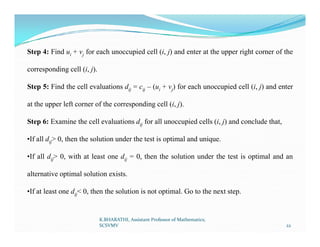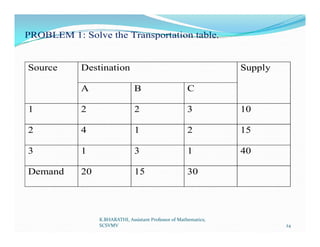The document discusses the transportation problem and how to solve it. The transportation problem aims to minimize the cost of transporting goods from multiple sources to multiple destinations, given supply and demand constraints. It describes the mathematical formulation and defines key terms like feasible and basic feasible solutions. It also outlines several methods to obtain the initial basic feasible solution, including the Northwest Corner Rule, Least Cost Method, and Vogel's Approximation Method. Finally, it discusses the Modi Method for obtaining the optimal basic solution through iterative testing of cell evaluations.
